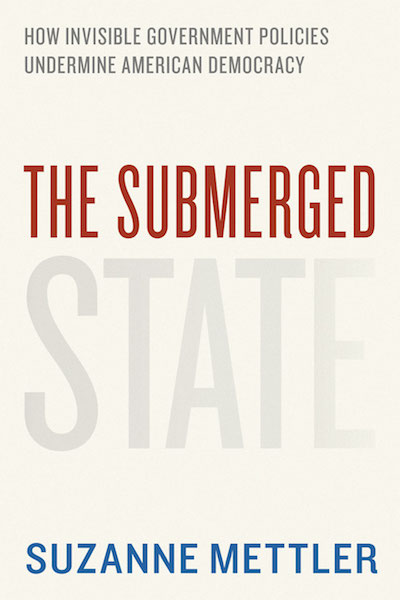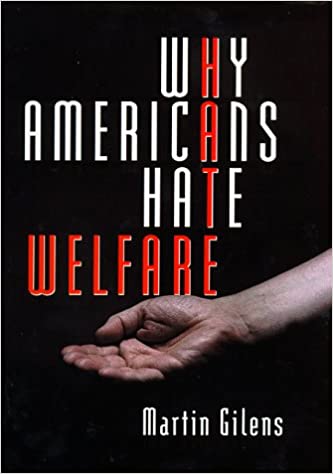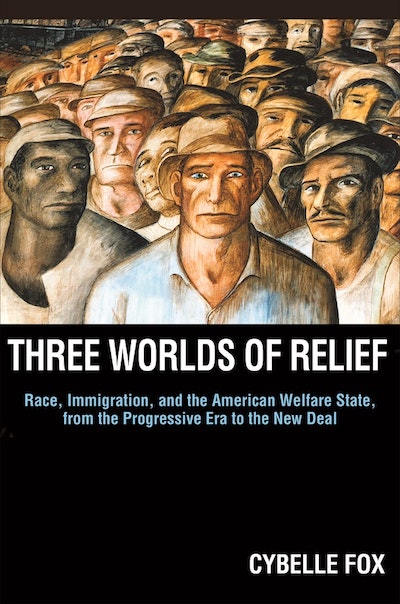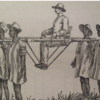When countries besieged by the coronavirus shut down, people across the world, isolated in their homes, found ways to express their solidarity. Italians came out onto their balconies to applaud the healthcare workers who confronted great risks as they sought to save patients in overwhelmed hospitals. Britons drew rainbows and urged their fellow citizens to stay at home. In the United States, too, rituals of solidarity emerged. At 7:00 p.m. each night, New Yorkers lean out their windows to clap and bang on pots to show their appreciation for healthcare workers. Children across the country draw rainbows of thanks, placing them in windows for passersby to see. National emergencies inspire solidarity, the lessons of the Great Depression and World War II teach us. The pandemic is no exception.
“Although we are early in the public responses to the pandemic, the variable prospects for producing solidarity across different nations are already coming into focus.”But enduring solidarity does not emerge automatically from shared threats: It is produced through public action. The experience of the mid-twentieth century tells us that public leadership during emergencies plants the seeds of solidarity and that new public institutions must be crafted for this solidarity to be sustained over time. The Western welfare state emerged as the signal achievement from a decade and a half of economic depression and war, creating a postwar world that offered unprecedented and broadly shared social protections. Conversely, the omissions and unsavory compromises, particularly around racial inclusion, during that pivotal era mattered too; they have haunted liberal democracies ever since.1→Desmond King and Rogers Smith, Still a House Divided: Race and Politics in Obama’s America (Princeton, NJ: Princeton University Press, 2011).
→Ira Katznelson, When Affirmative Action Was White: An Untold History Of Racial Inequality In Twentieth Century America (New York: W. W. Norton & Company, 2005). Although we are early in the public responses to the pandemic, the variable prospects for producing solidarity across different nations are already coming into focus.
A comparison of the United Kingdom and the United States underscores the importance of existing institutions, strategic decisions, and public leadership regarding racial and ethnic differences in producing solidarity. Prior to the pandemic, the two countries appeared to be on similar political tracks, with solidarities forged in the 1930s and 1940s all but depleted.2Frances McCall Rosenbluth and Margaret Weir, eds., Who Gets What? The New Politics of Insecurity (Cambridge University Press, forthcoming). Once the virus hit, neither country responded effectively. The United Kingdom’s early embrace of “herd immunity” left it with an exponential rise in Covid-19 cases and the highest death rate in Europe. Similarly, President Trump’s failure to respond to the early warnings of national security and health advisers allowed the numbers of sick to explode and the death toll to soar. Neither country has secured adequate personal protective equipment (PPE) for their beleaguered healthcare workers, and neither has generated the testing capabilities needed to keep their populations safe. Yet, differences in institutional starting points, newly devised strategies, and public leadership position the United Kingdom to emerge from the emergency with stronger solidarity while developments on all three dimensions deepen the obstacles to solidarity in the United States.
Healthcare systems
Differences between the two countries start with their healthcare systems. Studies of welfare states have confirmed the political strength of universal programs, which aim to serve all citizens on equal terms.3Walter Korpi and Joakim Palme, “The Paradox of Redistribution and Strategies of Equality: Welfare State Institutions, Inequality, and Poverty in the Western Countries,” American Sociological Review 63, no. 5 (1998): 661–87. Although chronic underfunding by Conservative party-led governments had left the United Kingdom’s National Health Service (NHS) in a precarious condition in the decade before the virus hit, support for the NHS has remained strong. Much as the postwar architects of the British welfare state had hoped, the NHS became a prized national institution. A 2013 poll found that the NHS beat out the army and the monarchy as the institution that made respondents “most proud to be British.” The current challenges facing the NHS as it confronts the coronavirus have provided a focal point for broad-based solidarity around a cherished, if tattered, public institution. The postal service now inscribes mail with a stamp that reads, “Stay Home, Protect the NHS, Save Lives.” A call for volunteers to help the NHS—by delivering food and other supplies to allow the elderly to stay home—gave citizens a chance to act on solidaristic impulses. Hoping for 250,000 volunteers, the government was inundated with over 750,000 responses. Public media, in turn, has celebrated both the NHS and the volunteers. Public commentary is pressing Prime Minister Boris Johnson, who sang the praises of the NHS after his successful treatment for coronavirus, to make good on his promises to fund the system.
“The public-private healthcare system in the United States, despite its massive public funding, has become emblematic of the greed, dysfunction, and inequality built into the private institutions that dominate healthcare delivery”Americans, too, appreciate healthcare workers. Cities across the country have lit up local landmarks in blue as a show of support and chefs have taken over shuttered restaurants to prepare meals for healthcare workers. Yet, these efforts remain abstract and personalistic, unconnected to a specific public institution that embodies solidarity. Instead of a universal public institution, the job-linked public-private health system in the United States is dominated by private insurance companies, hospitals, and medical facilities all seeking to maximize profits. Indeed, the public-private healthcare system in the United States, despite its massive public funding, has become emblematic of the greed, dysfunction, and inequality built into the private institutions that dominate healthcare delivery. Hospital systems, faced with fiscal stress, have furloughed workers even as they struggle to treat coronavirus patients. Rural hospitals, long in precarious financial condition, have closed down as profitable elective and nonemergency surgeries were cancelled in preparation for coronavirus patients. Private donations have boosted the capacities of hospitals in wealthy communities while those in poor neighborhoods—home to the bus drivers, home healthcare aides, and other workers deemed “essential”—struggle with dilapidated facilities, insufficient supplies, and patient overload. These experiences do not build solidarity; rather, they compound inequalities and breed mistrust.
Economic strategies
Economic strategies for supporting the stay-at-home orders differed dramatically in the United Kingdom and the United States. In the United Kingdom, the Conservative party government issued a surprise decision to keep nonessential workers on their employers’ payroll, supported by government funding of up to 80 percent of their wages and capped at £2,500 per month. The payments amounted to just over the median income. In announcing the new Coronavirus Job Retention Scheme, the chancellor of the exchequer, Rishi Sunak, explicitly noted the collective nature of the crisis: “We are starting a great national effort to protect jobs. We want to look back on this time and remember how in the face of a generation-defining moment we undertook a collective national effort and we stood together.” In launching the program, the United Kingdom followed the example of other European nations, which guaranteed wages for workers sidelined by the stay-at-home orders. To be sure, the United Kingdom’s economic response has left vulnerabilities, especially among the self-employed. Yet, the unexpectedly expansive response succeeded in creating a widely shared sense that UK residents could count on the government for economic support.
The United States, too, took unprecedented action to address the economic vulnerability created by stay-at-home orders. The US Congress, which had previously proved unable to enact much beyond tax cuts benefiting the wealthy, swiftly moved to approve one-time payments of $1,200 and instituted generous supplements to unemployment insurance. Yet, one-time payments, welcome as they were, did little to improve the economic security of families facing many weeks of reduced hours or no work at all.
“Rather than seeding a sense of collective fate, the US economic programs breed frustration, suspicion, and division.”Other measures meant to provide economic security fell short as well. Layered on top of weak state systems or reliant on private actors to deliver the assistance, the programs magnified all the flaws in the “submerged” welfare state, which delivers variable benefits through the states or through the private sector.4 Chicago: The University of Chicago Press, 2011More Info → Unemployment claims had to be processed through creaky state unemployment insurance systems. Long the target of cutbacks, these agencies were woefully ill-prepared to process the deluge of new claims. Indeed, some, like Florida’s, had been purposely designed to limit access to benefits. The $659 billion Paycheck Protection Program, intended to keep small businesses afloat with resources to pay their workers, also left gaping holes. The initial reliance on large banks to administer the program allowed these middlemen to layer on requirements designed to serve their own interests, such as requiring that applicants hold an existing line of credit with the bank. Not surprisingly, large businesses swooped in to capture the lion’s share of the initial benefits and many small businesses found themselves shut out. The complex rules surrounding the program and the weakness of the federal agency overseeing it all create doubts about its effectiveness and its fairness. Rather than seeding a sense of collective fate, the US economic programs breed frustration, suspicion, and division.
Chicago: The University of Chicago Press, 2011More Info → Unemployment claims had to be processed through creaky state unemployment insurance systems. Long the target of cutbacks, these agencies were woefully ill-prepared to process the deluge of new claims. Indeed, some, like Florida’s, had been purposely designed to limit access to benefits. The $659 billion Paycheck Protection Program, intended to keep small businesses afloat with resources to pay their workers, also left gaping holes. The initial reliance on large banks to administer the program allowed these middlemen to layer on requirements designed to serve their own interests, such as requiring that applicants hold an existing line of credit with the bank. Not surprisingly, large businesses swooped in to capture the lion’s share of the initial benefits and many small businesses found themselves shut out. The complex rules surrounding the program and the weakness of the federal agency overseeing it all create doubts about its effectiveness and its fairness. Rather than seeding a sense of collective fate, the US economic programs breed frustration, suspicion, and division.
Public leadership around race and ethnic patterns of Covid-19 infections and deaths
A stark contrast is also evident in leaders’ response to the racial and ethnic disparities surfaced by Covid-19 in the United Kingdom and the United States. This divergence is surprising since both Boris Johnson and Donald Trump won office after campaigns that appealed to native white grievances. Welfare state scholars describe both countries as “liberal welfare states,” in which poverty is attributed to individual failings rather than broader social conditions.5 John Wiley & Sons, 2013More Info → In the United States, however, views about individual responsibility and economic misfortune are deeply racialized.6
John Wiley & Sons, 2013More Info → In the United States, however, views about individual responsibility and economic misfortune are deeply racialized.6 Chicago: The University of Chicago Press, 2009More Info → This feature of US political culture is evident in a distinct thread running through the country’s reaction to the virus. In both the United Kingdom7Lucinda Platt and Ross Warwick, Are Some Ethnic Groups More Vulnerable to Covid-19 than Others? (UK: Institute for Fiscal Studies, 2020). and the United States, racial and ethnic minorities have disproportionately suffered from Covid-19, but only in the United States have leaders used this pattern to dismiss rising infection rates and death tolls as cause for public concern.
Chicago: The University of Chicago Press, 2009More Info → This feature of US political culture is evident in a distinct thread running through the country’s reaction to the virus. In both the United Kingdom7Lucinda Platt and Ross Warwick, Are Some Ethnic Groups More Vulnerable to Covid-19 than Others? (UK: Institute for Fiscal Studies, 2020). and the United States, racial and ethnic minorities have disproportionately suffered from Covid-19, but only in the United States have leaders used this pattern to dismiss rising infection rates and death tolls as cause for public concern.
When early data showed that African Americans accounted for 70 percent of the deaths in Louisiana, Senator Bill Cassidy pointed to the higher rates of obesity and diabetes among Black Americans, brushing aside questions about underlying social and economic conditions. The long history in the United States of branding immigrants of color as “unassimilable” has also surfaced in public comments on the outbreak of Covid-19 in immigrant-staffed meat processing plants.8 Princeton, NJ: Princeton University Press, 2012More Info → In South Dakota, a spokesperson for Smithfield’s pork processing plant attributed the high incidence of Covid-19 among Latine poultry workers to the fact that “living circumstances in certain cultures are different than they are with your traditional American family.” As Wisconsin’s Supreme Court considered the legality of state’s stay-at-home order, the Chief Justice questioned evidence about the rapidly rising infections in a rural county, noting that cases concentrated in the immigrant-staffed meat packing plant and not among “the regular folks.” Meanwhile, physical and verbal attacks on people of Asian descent have mounted in the wake of the president’s repeated reference to the “Wuhan virus” and his efforts to cast blame on China.
Princeton, NJ: Princeton University Press, 2012More Info → In South Dakota, a spokesperson for Smithfield’s pork processing plant attributed the high incidence of Covid-19 among Latine poultry workers to the fact that “living circumstances in certain cultures are different than they are with your traditional American family.” As Wisconsin’s Supreme Court considered the legality of state’s stay-at-home order, the Chief Justice questioned evidence about the rapidly rising infections in a rural county, noting that cases concentrated in the immigrant-staffed meat packing plant and not among “the regular folks.” Meanwhile, physical and verbal attacks on people of Asian descent have mounted in the wake of the president’s repeated reference to the “Wuhan virus” and his efforts to cast blame on China.
In the United Kingdom, by contrast, the disproportionate incidence of Covid-19 among members of Black and ethnic minority groups has drawn widespread public attention to the large share of people from these groups on the front lines fighting the virus. Boris Johnson’s public thanks to the immigrant nurses who cared for him in hospital underscored their critical role. The government also announced a public inquiry into the causes of the racial and ethnic disparities. These probes may well encounter controversy, but there is no doubt that the political leaders of both major parties in the United Kingdom acknowledge the disparities as a matter of public responsibility. The United Kingdom has seen some verbal and physical assaults on people of Asian appearance, but anti-Asian sentiment has been largely confined to the fringes. It has not become a significant talking point for the governing party.
“The pandemic has exposed the barriers to solidarity in the United States. It may yet provide the opportunity to repair them.”The coronavirus pandemic is barely four months old. It is likely that governments in the United Kingdom and in the United States will struggle with the health and economic consequences for years to come. While the initial responses in the United Kingdom position it to build solidarity, predictions of the deepest depression in 300 years will test the government and its people. In the United States, future public action can remedy the divisive responses adopted early in the pandemic. Many state and local governments have modelled inclusive assistance and leadership. Temporary federal programs adopted during the emergency, such as paid sick leave, provide a template for a sturdier safety net. The public health emergency has laid bare the forces that fracture Americans: yawning gaps in social policy that disproportionally harm low-income people; free rein for the strong-arm tactics of business intent on profit; and the deep exploitation of low-wage workers, disproportionately people of color. The pandemic has exposed the barriers to solidarity in the United States. It may yet provide the opportunity to repair them.
Banner photo credit: Tim Dennell/Flickr
References:
→Ira Katznelson, When Affirmative Action Was White: An Untold History Of Racial Inequality In Twentieth Century America (New York: W. W. Norton & Company, 2005).














